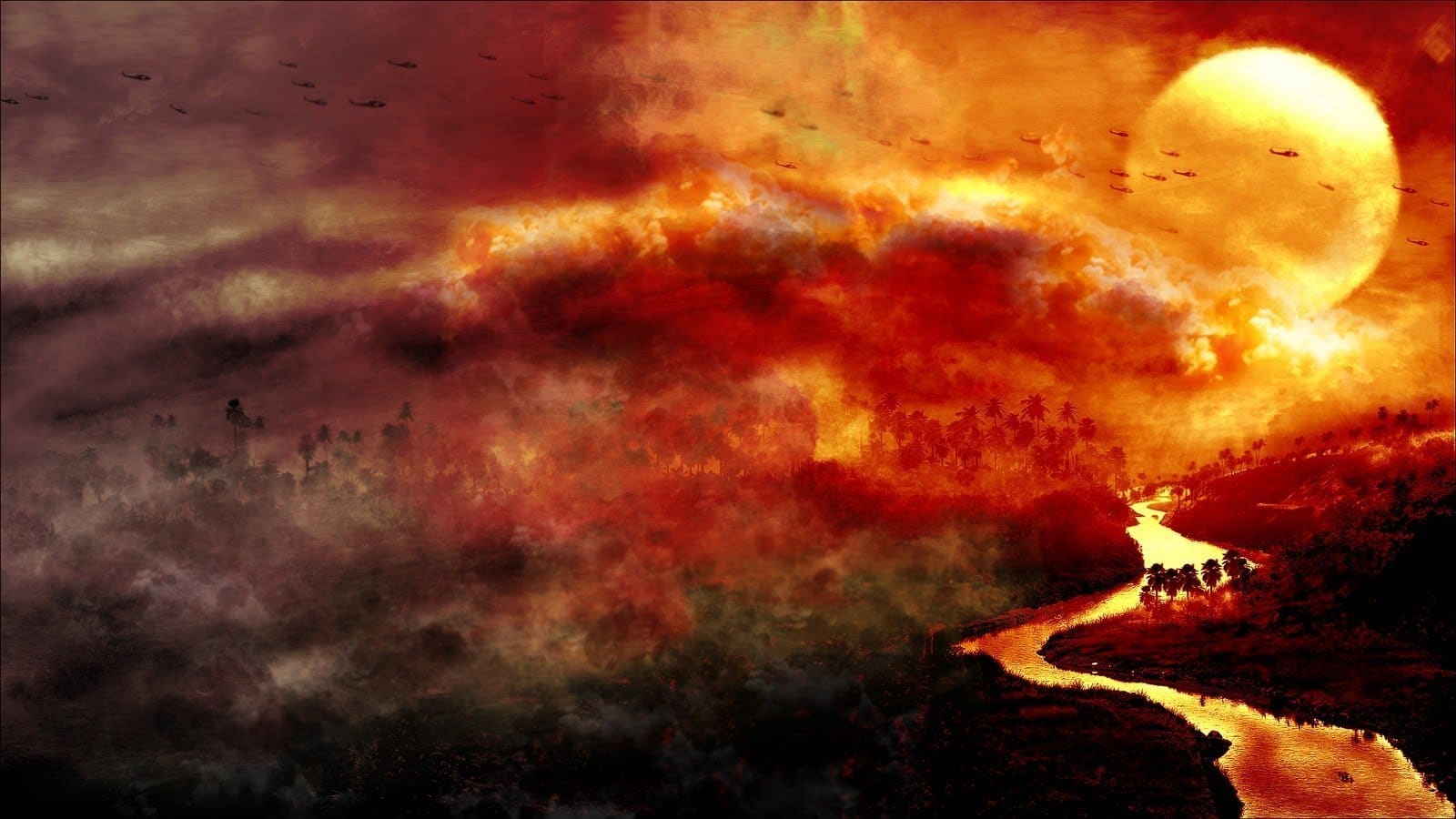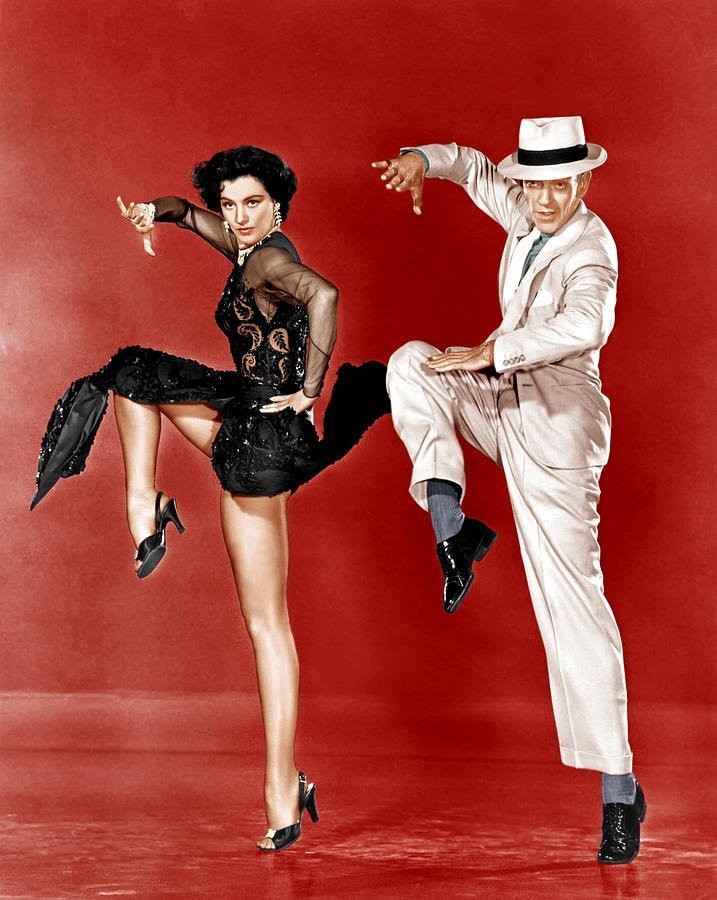A brilliant restoration of Apocalypse Now means another fresh ride for Technicolor, the process behind some of cinema’s greatest artistic triumphs
Great news. Apocalypse Now has been restored and is back in cinemas and in pin-sharp Blu-ray, later in 2011. Yes, the “best Vietnam film, one of the greatest of all films” – according the revered Roger Ebert of the Chicago Sun-Times – is back.
And it’s back in Technicolor. So now a new generation can marvel as choppers swoop to the sound of Wagner’s Ride of the Valkyrie, thrill at Robert Duvall’s “I love the smell of napalm in the morning” and stare in slack-jawed amazement at the sheer size of Marlon Brando.
Except that it isn’t. In Technicolor, that is. Not technically speaking, as any number of film geeks will tell you. The reason being… well, read on and all will be explained. What is interesting, though, is that director Francis Ford Coppola is tying the reputation of his film to a process that had already bitten the dust, in the USA at least, when he made his anti-war masterpiece.
In wanting to be associated with Technicolor, Coppola is merely lining up with many a great director of Hollywood’s golden era. All of whom worshipped the film process which delivers magic on the screen, rich, gorgeous grain-free images in hues that seem to heighten reality.
The Wizard of Oz was shot in Technicolor, as were The Adventures of Robin Hood, Gone with the Wind, Snow White, Singin’ in the Rain and Spartacus. In fact there’s a good chance that if it’s a bona-fide stone-cold classic Hollywood movie, it was shot in Technicolor. Or a British one. Lawrence of Arabia, Black Narcissus and The Red Shoes were all shot in Technicolor too.
A gigantically costly, technically exacting and punishingly slow process, Technicolor’s three-strip system, as the name suggests, used three separate, differently filtered, black and white negatives in cameras the size of a fridge-freezer to produce a single finished image of exceptional depth of colour.
Look at the restored version of Errol Flynn’s Robin Hood and you can see the effect. Even Friar Tuck’s brown habit has a richness and glow to it which you just don’t get anywhere else. Nothing can get the wrinkles out of Flynn’s green tights but their fizzy lime colour is like nothing on earth.
Studios were well aware of this effect, which was particularly pronounced at the red end of the spectrum. Technicolor films are full of red – lips, velvet curtains, fires. Which is why Dorothy is wearing ruby slippers in the film version of The Wizard of Oz when the original book called for silver.
This saturated colour came at a cost though. Technicolor film was very, very slow – as low as 5 ASA (good old summer-holiday film being maybe 160 ASA) – and it took an awful lot of light to get the silver nitrate in those three separate strips to react. This meant huge lighting rigs and temperatures up around 35 C (no fun if you’re dressed as a lion or a tin man). Burnt retinas were not uncommon. Hence sunglasses on set. A habit film stars have stuck with ever since.
At the other end of the process was the printing of the film. And this, too, was different, relying on a process called dye imbibition – each of the complementary filtered colours was laid over the other on a transparent film emulsion in much the same way you’d print a T shirt. The result was a positive print with no grain and great sharpness. And because you could always go back to the original three black and white negatives – technologically simple and astonishingly hard-wearing – Technicolor has great longevity too.
The other great cost was the Technicolor consultant. Technicolor kept tight control of the process, owned all the cameras and the processing labs. A studio shooting a Technicolor film couldn’t start running film through a camera until one of Technicolor’s consultants was on set. Most famous of them was Natalie Kalmus, the wife of Herbert Kalmus, who’d founded the Technicolor company, a woman whose name rarely cropped up in a sentence without “bitch” being somewhere in there too. Being kind, let’s just say she was opinionated. Natalie Kalmus was on set the day David O Selznick burnt down his 40-acre back lot, full of old sets going back to the days of silent movies, to simulate the torching of Atlanta in Gone with the Wind, a one-off event captured with every single Technicolor camera that existed in the USA. All seven of them.
Process 4, as the Technicolor Motion Picture Corporation called it, reigned supreme from the early 1930s until the mid-1950s. Hollywood’s golden era, in other words. But as film audiences began to dwindle, the economics of producing Technicolor ceased to add up. And in any case Eastmancolor had arrived. Not as good, not as durable (ten years and it’s beginning to fade) but much cheaper.
In 1954 the Jane Russell western Foxfire became the last Hollywood movie shot with Technicolor cameras, though the dye imbibition process for making prints continued until 1974, when The Godfather: Part II became the last American film to be made that way.
As with the cameras, the labs were sold off to parts of the world where labour was cheap. Which is why the Italian Dario Argento’s Suspiria (1977) is in bloody Technicolor. And why the early movies of the Chinese master colourist Zhang Yimou – the lucky recipient of Britain’s redundant Technicolor equipment – were producing wows from the audience into the 1990s.
All of which helps explain Apocalypse Now. The geeks are right, it’s not a true Technicolor film because it was not shot using Technicolor cameras. Nor were the original projector prints made using Technicolor’s imbibition process. Those labs were in Italy helping Argento produce his most famous and brilliantly lurid horror film.
But new prints of Apocalypse Now were struck for the Redux version in 2001, using a dye imbibition process which Technicolor revived and which was used for only a few movies (Bulworth, Toy Story and Pearl Harbor among them) before disappearing again. And it’s these prints – rich with inky blacks and saturated colours – which have been used as the source for the digital prints you’ll be able to see in cinemas, or at home on the Blu-ray.
You lucky, lucky people.
Apocalypse Now is released in cinemas in May 2011.
A three-disc Blu-ray version containing original cut, Redux and the documentary Heart of Darkness is available here at Amazon.
Ten Unmissable Technicolor Films
The Band Wagon (1953, dir: Vincente Minnelli)
No director had an eye for Technicolor like the former window dresser Vincente Minnelli (father of Liza). And in this brilliant musical Minnelli also had songs, a witty script and Fred Astaire and Cyd Charisse (pictured above). Perfection.
The Wizard of Oz (1939, dir: Victor Fleming)
Judy Garland leaves boring monochrome Kansas behind and rides a tornado into a Technicolor Oz. Imagine the effect that this film had in Depression-era America.
Gone With The Wind (1939, dir: Victor Fleming)
“The most magnificent picture ever!” is how the posters described this cinematic landmark when it was released, now reckoned to be the most popular film ever. Yes, bigger than Avatar.
Gone with the Wind – at Amazon
A Matter of Life and Death (1946, dir: Michael Powell)
David Niven pleads for his life in a celestial court in this offering (also known as A Stairway to Heaven) from Brits Powell and Pressburger, which cheekily presents Heaven in black and white and Earth in Technicolor.
A Matter of Life and Death – at Amazon
Black Narcissus (1946, dir: Michael Powell)
A convent of nuns go slowly mad in the Himalayas in another great Powell/Pressburger film, so cunningly shot by cinematographer Jack Cardiff you’d barely guess it was made within half an hour of London.
Singin’ in the Rain (1952, dir: Gene Kelly, Stanley Donen)
Best musical ever? A witty satire on the end of the silent era in Hollywood. It’s got songs, dance routines, brilliant sets, jokes – and Donald O’Connor virtually eclipsing Gene Kelly with his “running up the wall” trick.
Singin’ in the Rain – at Amazon
The Adventures of Robin Hood (1938, dir: Michael Curtiz)
Errol Flynn is the most famous incarnation of Robin Hood in a film colour-co-ordinated to bring out the full possibilities of Technicolor. Fabulous. Just don’t expect grungy realism.
The Adventures of Robin Hood – at Amazon
Lawrence of Arabia (1962, dir: David Lean)
Peter O’Toole is the star of this biopic of TE Lawrence but it’s Omar Sharif who gets its most iconic scene – a locked camera shot that focuses on an empty shimmering desert horizon and keeps staring as Sharif slowly, majestically arrives.
Lawrence of Arabia – at Amazon
Snow White and the Seven Dwarfs (1937, dir: David Hand)
Disney had exclusive use of Technicolor for a while, which encouraged them to advance from shorts to this, their first full-length movie. A decision which doesn’t seem to have done them any harm at all.
Snow White and the Seven Dwarfs – at Amazon
Raise the Red Lantern (1991, dir: Zhang Yimou)
In 1920s China a young girl becomes wife number three of a rich old lord in one of the most famous films of Zhang Yimou, a master of colour and emotion and director of some of the last true Technicolor films ever made.
Raise the Red Lantern – at Amazon
I am an Amazon affiliate
© Steve Morrissey 2011

